Genesis of Gemstones: Danny McBride and DP Paul Daley Reveal How Bradley Cooper Brought the Unholy Patriarch to Life
The Gemstones Sunday service has come to an end. After four seasons, Danny McBride’s dark comedy following a dysfunctional televangelist family aired its final episode with a glorious blood-soaked banger. But among the chaos, McBride and company focused its scripture on the series’ revolving theme: a family of unconditional love. And it was at the start of the season, we were introduced to the Gemstones’ family origins through a Civil War era epic with 12-time Academy Award nominee Bradley Cooper playing the OG bible preacher.
The Season 4 premiere was directed by McBride and shot by Paul Daley, who was the cinematographer on more than half of the thirty-six series episodes. Its gritty texture, angelic imagery, and period realism make it one of television’s brightest bottle episodes, at least from my perspective. This, alongside the likes of “Long, Long Time” from season one of The Last of Us, Mad Men’s “The Suitcase,” Breaking Bad’s “Fly,” and Atlanta’s “Teddy Perkins.” Asking McBride about its makeup, the GQ Global Creativity Award winner told me, “I always had the idea that we would go back and show the beginning of who first stepped into this world. And as I started thinking about it, the Civil War felt like something we hadn’t done.”
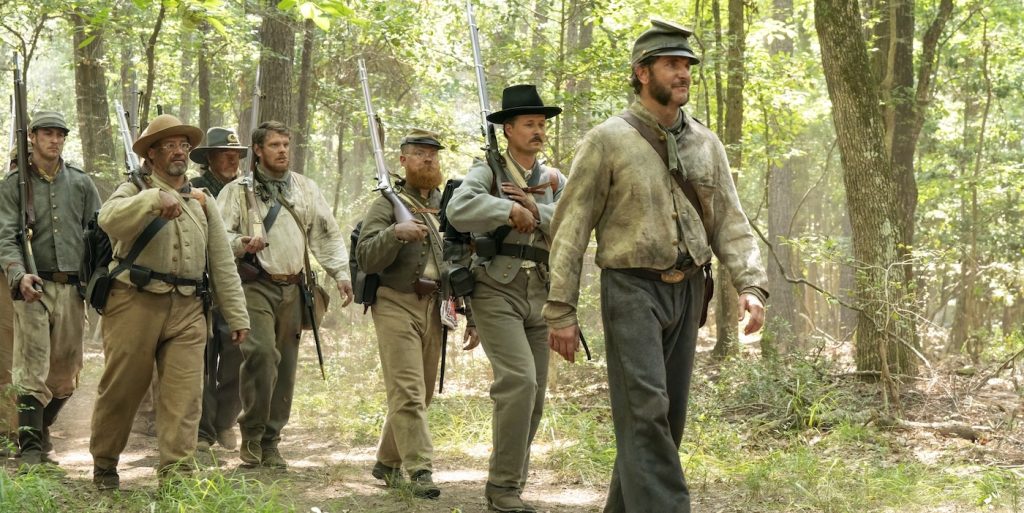
Visually, McBride wanted to push the imaginative envelope of the episode. “Creating this show, which has been a blast, is because so many people behind the camera are people I’ve known for years,” McBride says. “I know their tastes and I know their sensibilities. And I also know what they’re capable of. So when I’m writing any season, a lot of it is to challenge the people I work with to push ourselves to do something we haven’t done before.”
In conveying tone, the creative team referenced period material along with Edward Zwick’s 1989 war drama, Glory, to make sure every inch of the frame was filled detailed purpose. “There’s nothing comedic about how we do the show,” notes Daley. “It isn’t shot or lit in a comedic way. We shoot it dramatically with style and try to make it look like a major motion picture.” The backbone of the immersive atmosphere came from the production design by Richard A. Wright, who has worked with McBride on Eastbound & Down, Vice Principals, and David Gordon Green’s directed Halloween trilogy starring Jamie Lee Curtis, where McBride served as EP and co-writer. Wright turned a number of practical locations throughout Charleston, South Carolina, into 360° working sets, including the white washed period church where Cooper’s character Elijah is first introduced with the intention to rob the clergy. It’s here where a twist of fate sends the lawless drifter down a path of righteousness.
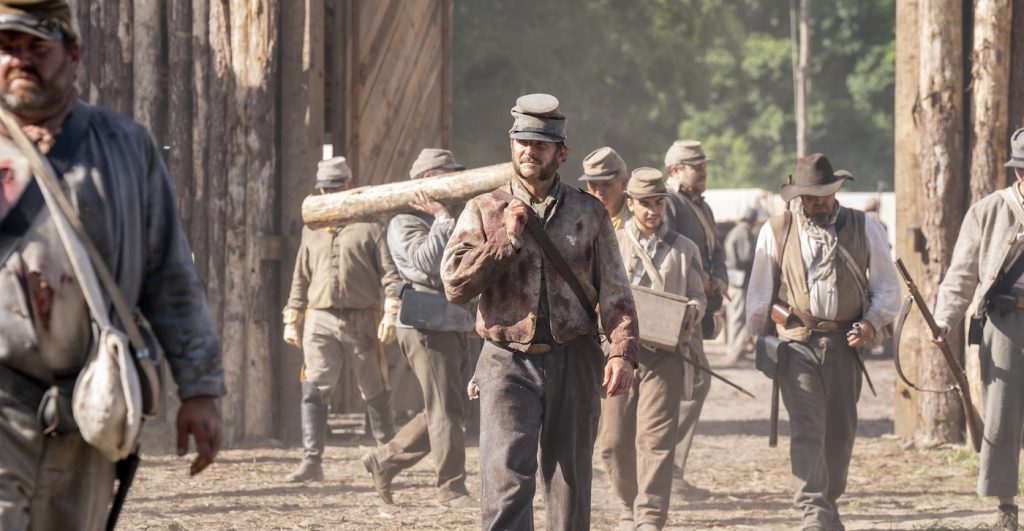
“Weirdly, finding that church was the hardest part about making that show, because as you can imagine, any church that’s in the South that’s period-appropriate is probably not necessarily wanting a film crew to come in and shoot a minister between the eyes in the middle of the church,” McBride says with a grin. “We found a church about an hour and a half outside of Charleston, and they were willing to work with us because we were going to restore some elements of the church that were in need of repair.”
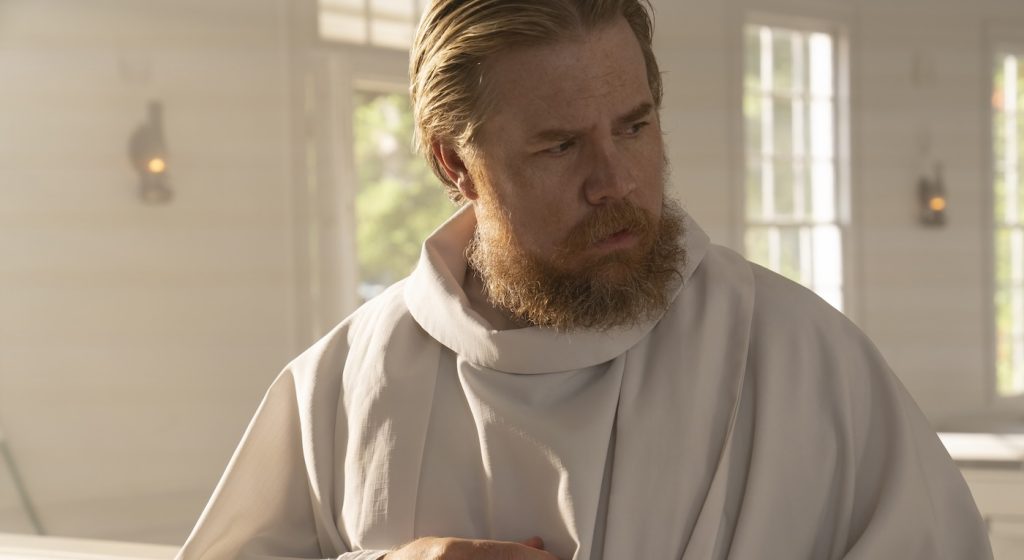
McBride initially imagined a darker environment. “I remember when I walked with Paul, and it was a lot brighter than I had anticipated the scene to be. It didn’t seem moody, like he’s [Elijah] not emerging from the shadows. Then, as we started to block the scene, it was like, well, he doesn’t need to emerge from the shadows. Maybe it’s this idea of this false sense of holiness, and this guy doesn’t belong here. He’s what’s dark. He’s what’s ominous. And so we came up with the idea that instead of him emerging from the shadows, he rises from a pew. And so that’s how that scene unfolded. We were kind of backed into a corner, and then we figured out a better way to tell the story.”
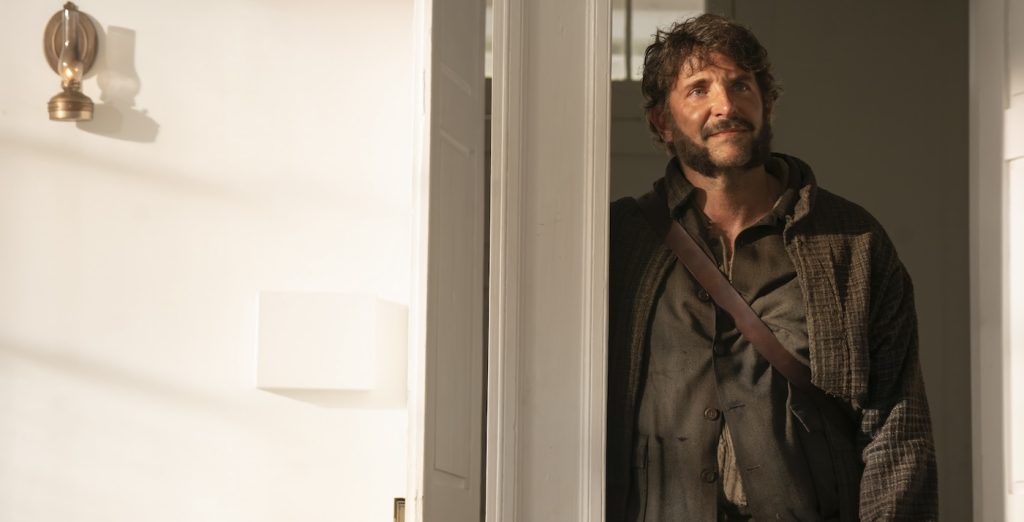
Shaping the church sequence, Daley punctuated the location with angelic lighting. “We devised a truss rig spanning the length of the church between two Lull telehandlers. The instruments were then underslung on the truss in the center of the windows, and the base of the lifts was covered with branches. This system was necessary to maintain unobstructed window views whilst lighting through those same windows. The beauty is when a light has to move, they all move at the same time so the beam angles remain exactly the same,” he says. Three 18Ks replicated the sun, each able to have its pan, tilt, spot, and flood remotely controlled. “They’re an instrument called an LRX, and it allows you to focus all the instruments very accurately from one spot without requiring multiple electricians in lifts. It’s a very efficient system.”
When Elijah robs the minister (Josh McDermitt), stealing his gold bible, it becomes an important part of Gemstone’s family history and a key story point this season. Production removes the front row of pews and places the preacher’s body on an apple box to frame the unnerving moment, one that spotlights Elijah’s unrepentant behavior.
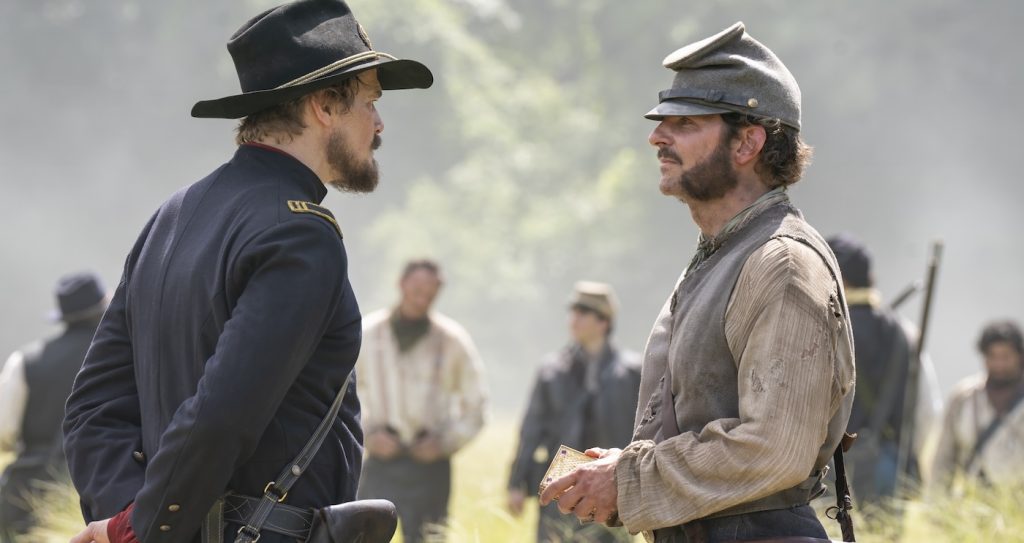
Another choreographed sequence was a battle where hundreds of men charged an open field of gunfire, cannon, and explosions. It’s full-on war revealed in a visceral one-shot, moving from left to right. “It was Danny’s idea to do that, and it was stunt coordinator Cory DeMeyers who was the genius behind it,” says Daley. The crew utilized a full day of rehearsal, leaving nothing left to chance on shooting day, which took place in Charleston. The sequence culminates with a soldier exploding in the air from cannon fire, before his bloody body is dragged away. “It was quite complicated, we had about 200 feet of dolly track, and we needed it to be motion control because we had to stitch the entire sequence together. Our dolly grip, Philip Dann, was unbelievable; he kept doing the take again and again,” recalls Daley.
Special to the episode are images of soldiers stylized as if they were torn from history books. “We wanted them to look like those silver nitrate photographs. I asked our camera intern to find out what lens was used, and it was a 5mm equivalent, so that’s what we used to match it,” notes Daley. “We were ostensibly grabbing extras without paying any special attention to anything. Those people weren’t pre-selected or anything. The level of detail that went into the hair, makeup, and wardrobe people went into allowed us to do that,” says Daley.
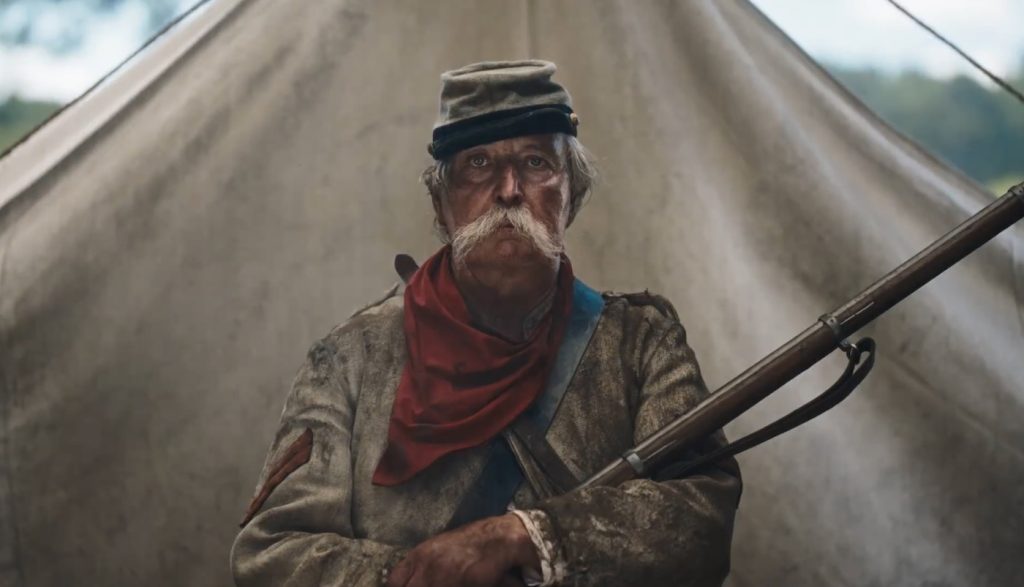
In one of the final sequences, Elijah brings a group of slaughtered soldiers back to camp by wagon. The song “For A Day Like Today” by Lee Hazlewood simmers in the background. As Elijah enters the camp, the men run up to him, asking why the Yanks have spared his life. For which he replies, “It wasn’t the yanks that did it. It was God that saved me.” It’s an epiphany moment for the character, who may have started to see the light. A challenge Daley faced was that he had only a few attempts to capture the moment during golden hour. Then, a second hurdle was figuring out a camera move that required extra time mid-scene. “I was stuck and we couldn’t get the camera from where it started to him quickly enough,” admits Daley. “But this is when someone like Bradley comes in. I needed to buy some time for the shot, and he said, ‘What do you need?’ I said, I need three seconds. So that moment when he rides in, he fumbles and drinks from his canteen. That gave us enough time to get the camera into him, where he delivers the line. “It was God that saved me.” When asking McBride if God really did save Elijah, he says, “I think that’s what’s left up to the audience to decide.”
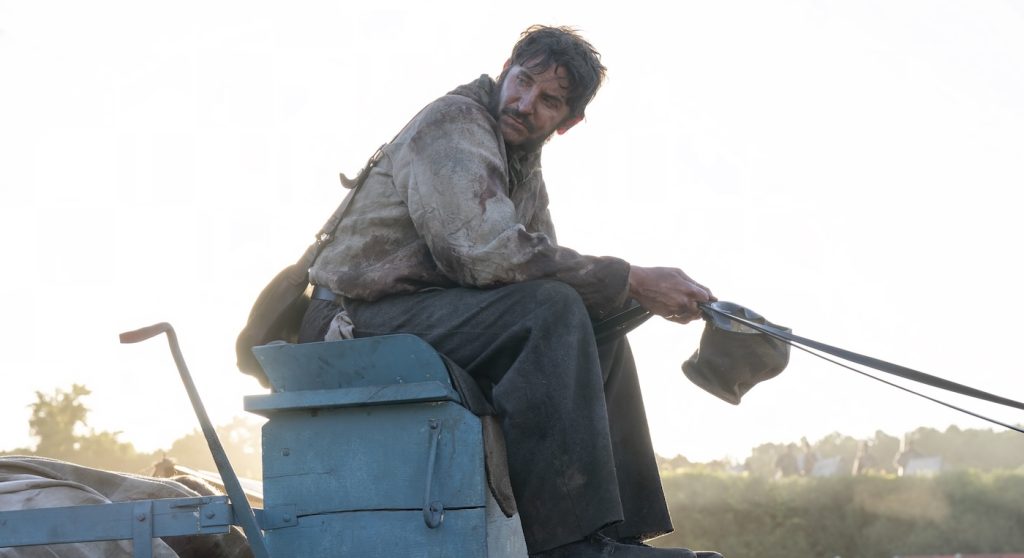
All four seasons of The Righteous Gemstones are available to watch on MAX.
Featured image: Bradley Cooper. Photograph by Connie Chornuk/HBO



